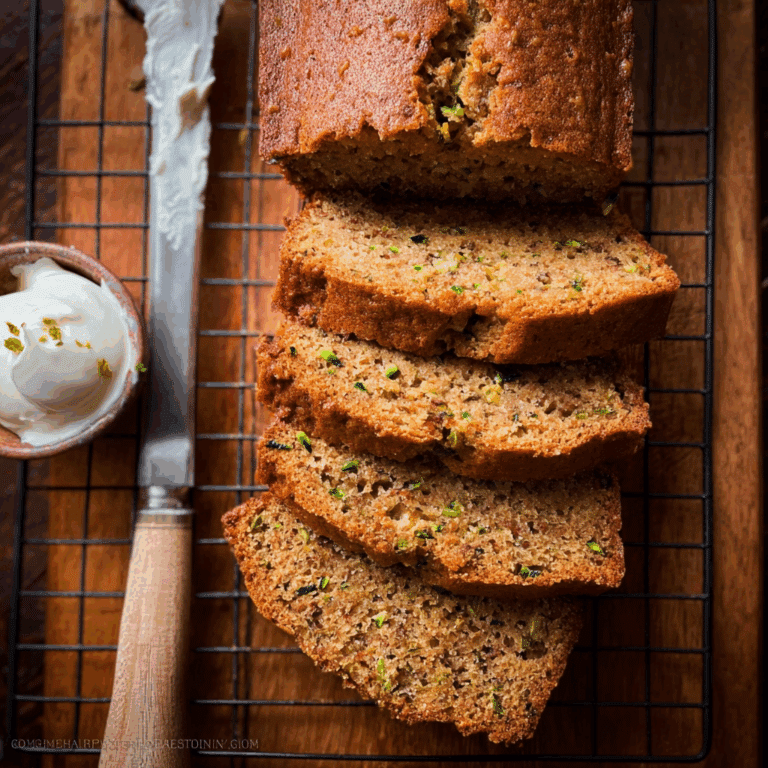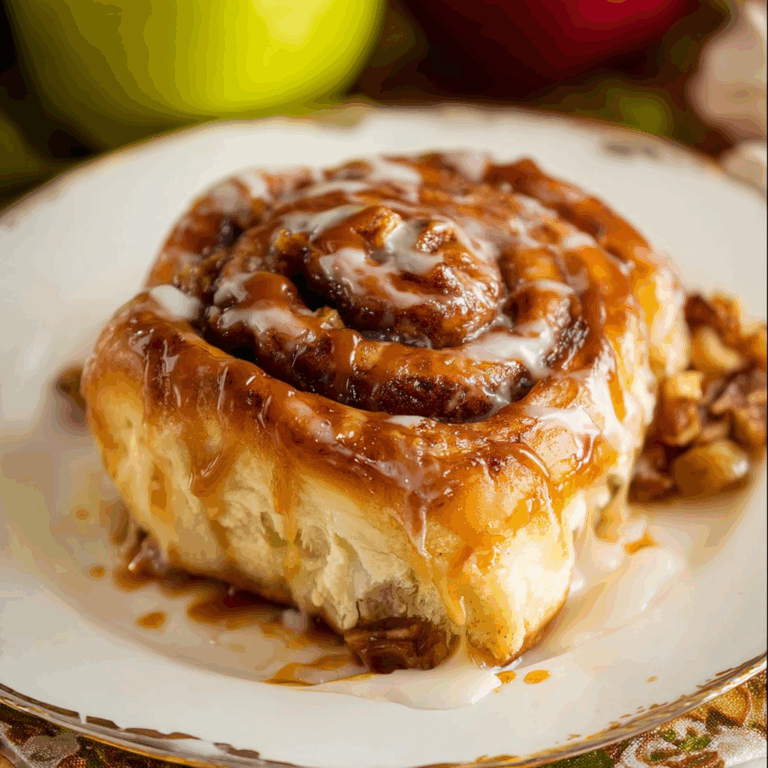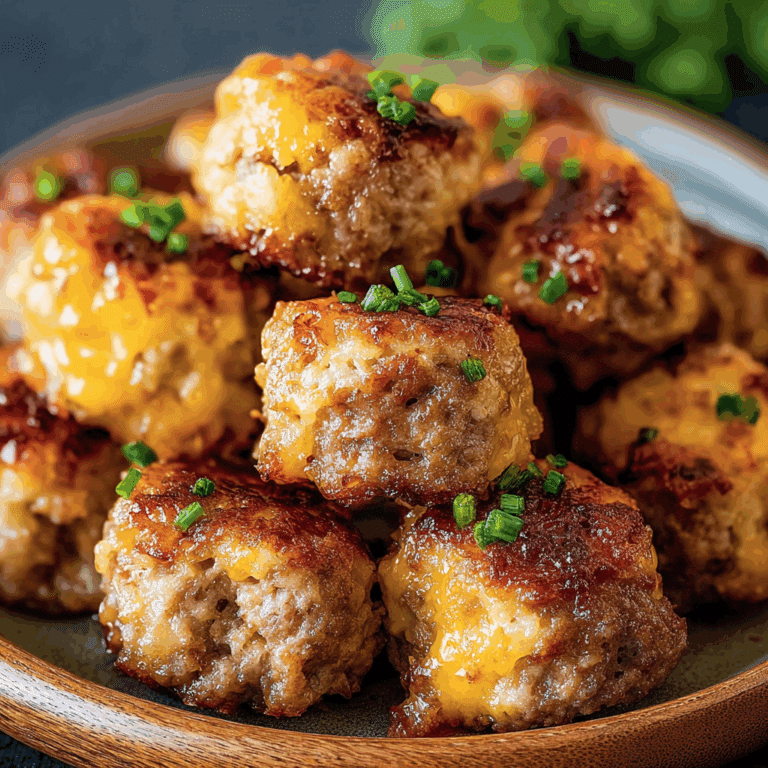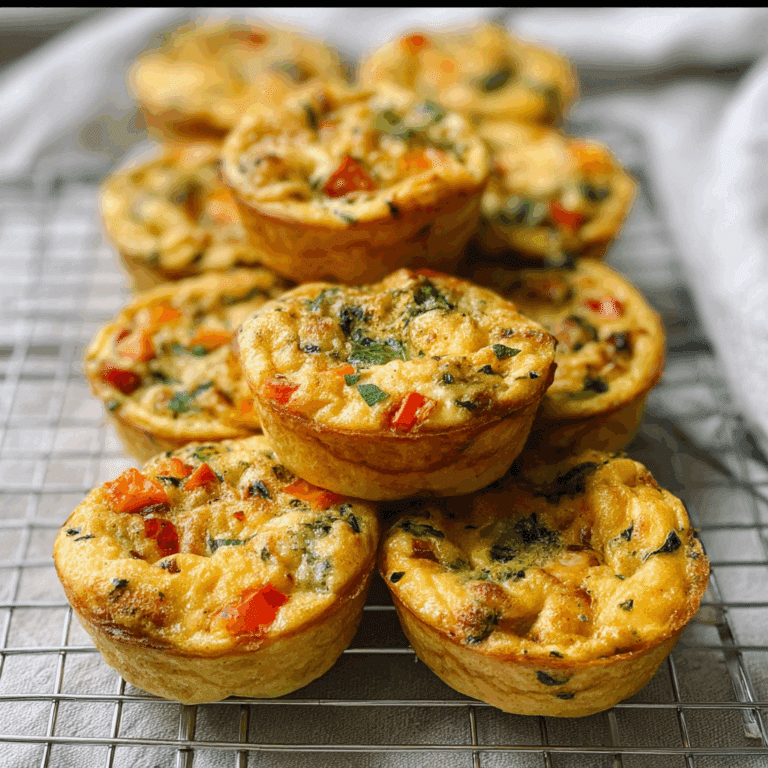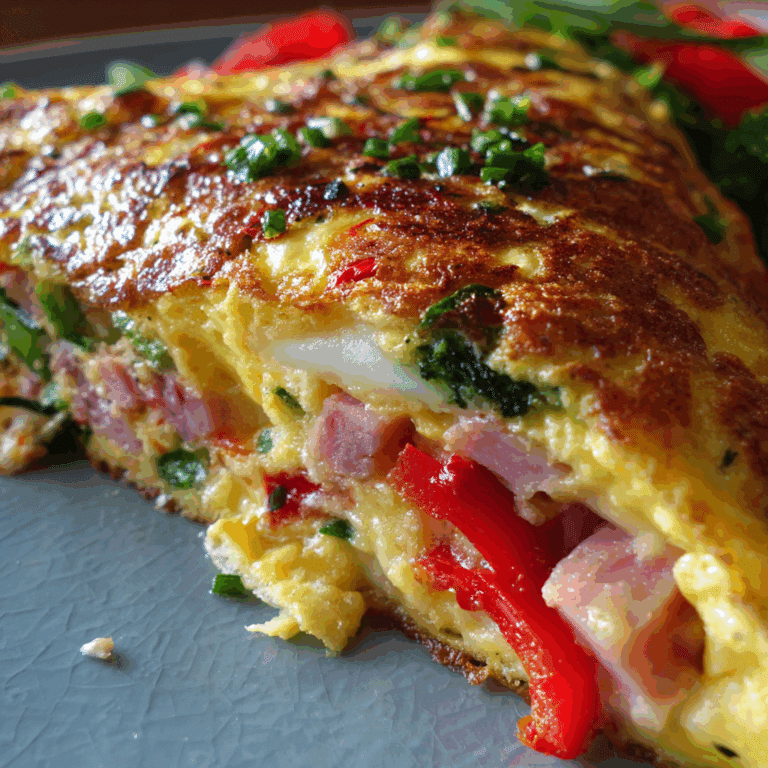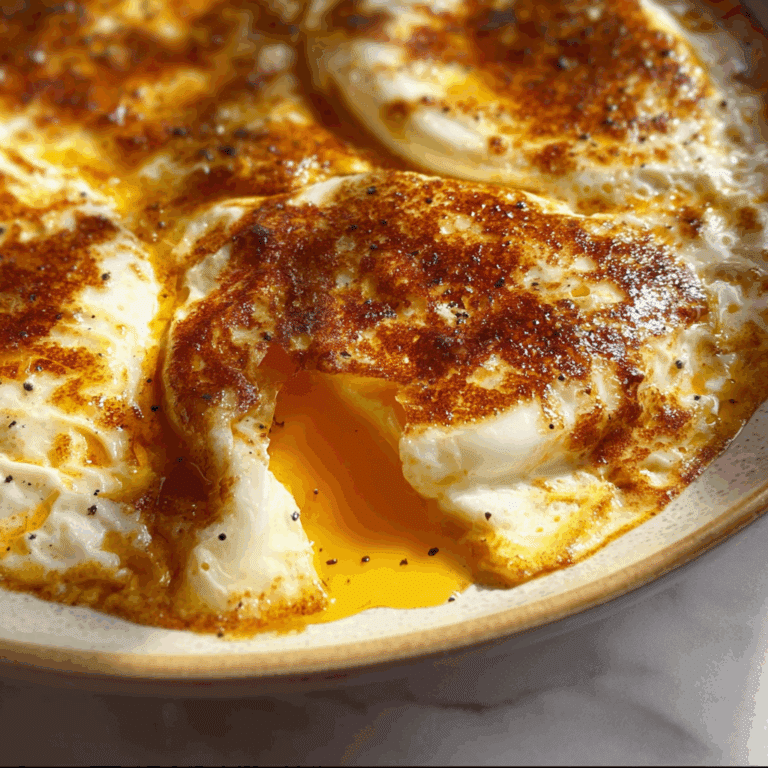How to Make Quick German Bread Fast
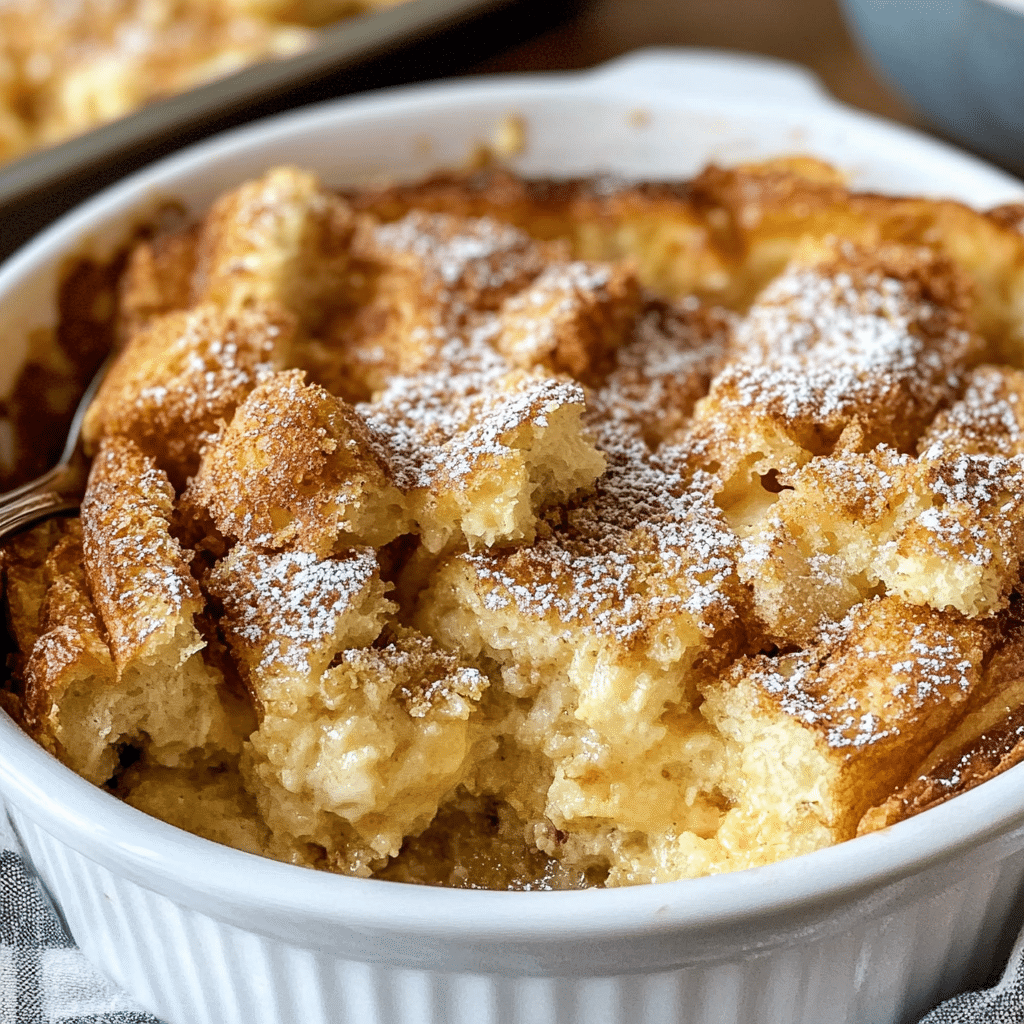
If you’ve ever craved homemade bread that’s both flavorful and quick to prepare, then this Quick German Bread recipe is your new best friend in the kitchen. Combining traditional German bread’s hearty taste with a speedy method, this recipe brings you warm, aromatic bread in no time. Whether you’re new to baking or just pressed for time, learning to bake Quick German Bread with this easy, fast recipe will give you that authentic rustic loaf without the long wait. Let’s dive in and get your oven warmed up!
Why You’ll Love This Recipe
- Speedy preparation: You’ll have dough ready to bake in under 10 minutes, perfect for busy days.
- Rustic flavor: Enjoy the deep, satisfying taste characteristic of German bread, without complicated techniques.
- Minimal ingredients: Simple pantry staples create a delicious loaf, proving less can be more.
- Versatility: Great on its own or paired with butter, cheese, or hearty soups.
- Family favorite: Perfect for all ages, making your home smell like a cozy bakery.
Ingredients You’ll Need
These ingredients are straightforward but thoughtfully chosen to create the perfect balance of texture, taste, and crust in your Quick German Bread. Each one plays a crucial role—from the yeast that gives life to the dough to the flour that creates a firm yet tender crumb.
- All-purpose flour: The base of your dough, providing structure and a light crumb.
- Warm water: Activates the yeast and ensures the dough develops properly without the need for long rises.
- Active dry yeast: The essential leavening agent that makes your bread rise quickly.
- Salt: Enhances the natural flavors and strengthens gluten for better texture.
- Sugar: Feeds the yeast and helps achieve a subtle golden crust.
- Optional rye flour: Adds a traditionally German earthy flavor and a touch of complexity.
Variations for Quick German Bread
The beauty of this Quick German Bread recipe is its adaptability. Feel free to tweak ingredients or add extras to suit your preferences or dietary needs—making this recipe truly your own is easier than you think!
- Whole wheat twist: Substitute half of the all-purpose flour with whole wheat for added nuttiness and fiber.
- Seeds and grains: Incorporate sunflower seeds or caraway seeds to introduce texture and classic German notes.
- Gluten-free version: Use a blend of gluten-free flours and a xanthan gum substitute to keep the bread soft and airy.
- Herbed loaf: Mix in fresh or dried herbs such as rosemary or thyme for an aromatic kick.
- Cheese infused: Add shredded sharp cheese into the dough for a rich, savory flavor.

How to Make Quick German Bread
Step 1: Activate the yeast
Combine warm water (about 110°F or 43°C) with sugar and active dry yeast in a bowl. Let it sit for 5-10 minutes until the mixture becomes frothy, which ensures the yeast is alive and ready to work. This step kickstarts the quick rise without waiting for hours.
Step 2: Mix the dry ingredients
While the yeast activates, whisk together your flour(s) and salt in a large mixing bowl. This evenly distributes the salt, regulating yeast activity and lending flavor to your bread. If using rye flour or seeds, add them here as well.
Step 3: Combine and knead
Slowly pour the frothy yeast mixture into the flour mixture. Stir with a wooden spoon or spatula until a rough dough starts to form. Then knead the dough on a lightly floured surface for about 5 minutes until smooth and elastic—don’t worry if it’s a bit sticky, quick German bread dough tends to be moist.
Step 4: Shape the dough
Form the dough into a round or oval loaf shape and place it on a parchment-lined baking tray. For that classic crust, you can gently score the top of the dough with a sharp knife—this also helps the bread expand beautifully in the oven.
Step 5: Bake immediately
Preheat your oven to 425°F (220°C). Because this recipe skips lengthy rising times, it goes straight into the oven. Bake for 25 to 30 minutes until the crust is golden brown and the bread sounds hollow when tapped on the bottom—your quick German bread is ready!
Pro Tips for Making Quick German Bread
- Check water temperature: Make sure your water is warm, not hot, to avoid killing the yeast.
- Knead just enough: Don’t over-knead; 5 minutes is sufficient to develop gluten for structure.
- Use parchment paper: Prevents sticking and helps achieve an evenly baked crust.
- Score your loaf: Makes baking more even and creates that charming artisan look.
- Cool on a rack: Let the bread cool completely on a wire rack to preserve a crispy crust.
How to Serve Quick German Bread
Garnishes
Sprinkle coarse sea salt or caraway seeds on top before baking for a flavorful crust that enhances each bite. Fresh herbs like rosemary can also be placed on the loaf before baking for an inviting aroma.
Side Dishes
Quick German Bread pairs wonderfully with hearty stews, sausages, or a sharp cheese plate. It’s also superb with traditional mustard or creamy spreads, making your meals feel truly authentic.
Creative Ways to Present
Slice thick, toast lightly, and serve with a variety of butters—herb, garlic, or honey butter all complement this bread beautifully. You can also hollow out the center to make a rustic bread bowl filled with dip or soup for a crowd-pleasing presentation.
Make Ahead and Storage
Storing Leftovers
Store leftover Quick German Bread in a paper bag or wrapped loosely in a clean kitchen towel at room temperature; this keeps the crust crisp and the crumb moist for up to 2 days.
Freezing
For longer storage, slice the bread and freeze it in airtight bags. This allows you to take out just what you need without sacrificing freshness—perfect for busy weeks.
Reheating
To revive the lovely crust and soft crumb, reheat slices in a toaster or oven at 350°F (175°C) for 5-7 minutes. Avoid microwaves as they can make the bread chewy or soggy.
FAQs
Can I use instant yeast instead of active dry yeast?
Yes! Instant yeast can be used, just mix it directly with the dry ingredients without proofing. It may speed up the rising process even more.
Why doesn’t this Quick German Bread require a traditional rise?
The recipe is designed to rely on a quick activation and immediate baking to produce a tender crumb and crust, cutting down the traditional fermentation times for convenience.
Can I add seeds to the dough?
Absolutely! Seeds like pumpkin, sunflower, or caraway can be mixed in for extra crunch and flavor, aligning well with German-style breads.
What flour works best for Quick German Bread?
All-purpose flour works great for this recipe, but combining with rye flour adds great authenticity and flavor depth common in German breads.
Is this bread good for sandwiches?
Definitely. Its firm yet soft texture makes it ideal for slicing and stacking with your favorite sandwich fillings.
Final Thoughts
There you have it—your new go-to Quick German Bread recipe that brings the warmth and tradition of German baking right into your kitchen without the wait. Easy to prepare, wonderfully tasty, and incredibly versatile, this bread is sure to become a favorite for casual meals and special occasions alike. So get your ingredients ready and enjoy the delightful smell and taste of fresh German bread anytime you want.
Related Posts
PrintQuick German Bread
Quick German Bread is a fast and flavorful homemade bread recipe that combines traditional hearty German flavors with a speedy preparation method. With simple pantry ingredients and no lengthy rising times, this rustic loaf delivers a warm, aromatic crust and tender crumb perfect for any meal or snack.
- Prep Time: 10 minutes
- Cook Time: 25-30 minutes
- Total Time: 35-40 minutes
- Yield: 1 loaf (about 8 servings) 1x
- Category: Appetizers
- Method: Baking
- Cuisine: German
- Diet: Gluten Free
Ingredients
Basic Ingredients
- 3 1/2 cups all-purpose flour
- 1 1/4 cups warm water (about 110°F or 43°C)
- 2 1/4 teaspoons active dry yeast (1 packet)
- 1 1/2 teaspoons salt
- 1 tablespoon sugar
Optional Add-ins
- 1/2 cup rye flour (to replace part of all-purpose flour)
- 2 tablespoons sunflower seeds or caraway seeds
- 1 teaspoon fresh or dried rosemary or thyme
- 1/2 cup shredded sharp cheese
- Substitute half of the all-purpose flour with whole wheat flour for a whole wheat twist
- Gluten-free flour blend and xanthan gum for gluten-free version
Instructions
- Activate the yeast: Combine warm water (about 110°F or 43°C) with sugar and active dry yeast in a bowl. Let it sit for 5-10 minutes until frothy, indicating the yeast is alive and active.
- Mix the dry ingredients: In a large mixing bowl, whisk together the all-purpose flour, salt, and any optional rye flour or seeds you are using. This distributes salt evenly and enhances flavor.
- Combine and knead: Slowly pour the frothy yeast mixture into the dry ingredients. Stir with a wooden spoon or spatula until a rough dough forms. Turn it onto a lightly floured surface and knead gently for about 5 minutes until the dough is smooth and elastic but still slightly sticky.
- Shape the dough: Form the dough into a round or oval loaf shape. Place it on a parchment-lined baking tray. Optionally, score the top gently with a sharp knife to help the bread expand evenly and create a classic artisan look.
- Bake immediately: Preheat the oven to 425°F (220°C). Place the shaped dough directly into the oven and bake for 25 to 30 minutes until the crust is golden brown and the loaf sounds hollow when tapped on the bottom.
Notes
- Ensure water is warm, not hot, to avoid killing the yeast.
- Knead the dough just enough (about 5 minutes) to develop gluten without overworking.
- Use parchment paper for baking to prevent sticking and promote an evenly baked crust.
- Score the top of the loaf for even baking and an attractive crust.
- Cool the bread completely on a wire rack to maintain a crispy crust.
- Optional seeds or herbs can be added for extra flavor and texture.
- Instant yeast can be substituted by mixing it directly with dry ingredients without proofing.
- Store leftover bread in a paper bag or wrapped loosely in a kitchen towel for up to 2 days.
- Freeze sliced bread in airtight bags for longer storage.
- Reheat slices in a toaster or oven at 350°F (175°C) for 5-7 minutes; avoid microwaving.
Nutrition
- Serving Size: 1 slice (1/8 loaf)
- Calories: 150
- Sugar: 1.5 g
- Sodium: 250 mg
- Fat: 1 g
- Saturated Fat: 0.2 g
- Unsaturated Fat: 0.6 g
- Trans Fat: 0 g
- Carbohydrates: 30 g
- Fiber: 1.5 g
- Protein: 5 g
- Cholesterol: 0 mg
Keywords: Quick German Bread, rustic bread, easy bread recipe, fast bread, no-rise bread, homemade bread, German baking, artisan bread


